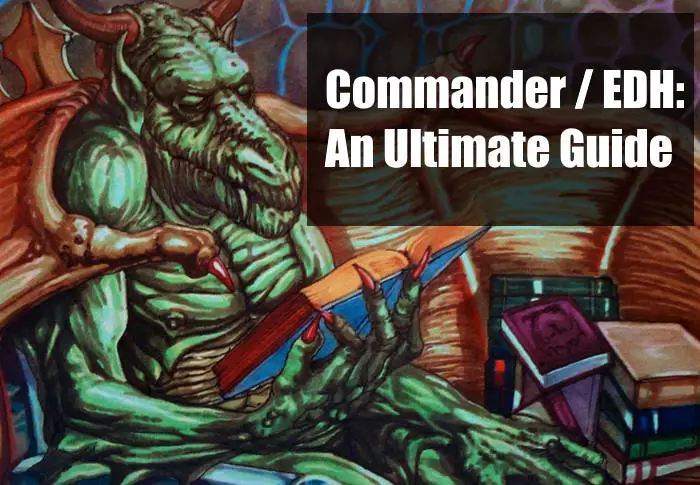Commander is easily the most popular format in MTG right now. This shouldn’t be a big surprise: there’s a plethora of amazing content for this format, and it lets you play the game in a fun and unique way. But what exactly is Commander?
Commander, or EDH, is a multiplayer format in which players build around a legendary creature known as their ‘commander’. Each player’s deck must contain exactly 99 cards (not including the commander), and they must all be within their commander’s color identity and have no more than one copy per card (excluding basic lands).
Players start the game with 40 life and with their commander in the ‘command zone’, from which they can cast their commander like normal. If a player’s commander dies, they may return it to the command zone and cast it again. However, they must pay two generic mana for each additional time they cast it from the command zone.
Between picking your commander, finding a play group, and earning more about the format, there’s a lot that can overwhelm a new player. Lucky for you, this article will guide you through the ins and outs of the format, as well as get you ready to start playing!
What is Commander?
Commander is a singleton format of Magic that has players construct 100 card decks built around a legendary creature(s) or certain planeswalkers (such as Daretti, Scrap Savant). Singleton decks can only contain duplicates of basic lands. You can play casually or competitively with as many players as you like (typically four is recommended), and each player starts with 40 life.
Deck construction is also limited to the commander’s color identity. A card’s color identity includes all colored symbols on the card (such as in its mana cost or abilities), and colors on the reverse side if it can transform. Samut, Voice of Dissent, for example, has the color identity of red, green, and white. She costs red and green mana to cast, and she has an activated ability that requires white mana.
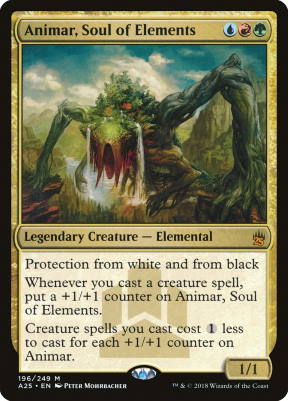
The commander starts the game in the command zone instead of in your library. To represent this, set your commander nearby and face-up. You can cast it from the command zone as though it was in your hand. When the commander would ever change zones, you can choose to put it back into the command zone instead. However, you must pay an additional two generic mana for each extra time you cast it from the command zone.
There’s also an alternate way to knock your opponents out of the game. If a commander deals 21 combat damage to a player throughout the course of a game, that player loses. Some decks try to win solely through ‘commander damage’ instead of reducing their opponents’ life totals to zero.
Is It EDH or Commander?
Commander’s former name was Elder Dragon Highlander, or EDH for short, and it was named after the Elder Dragons: Arcades Sabboth, Chromium, Nicol Bolas, Vaevictis Asmadi, and Palladia-Mors. When Adam Staley invented the format in 1996, these dragons were the only creatures you could play as your commander.
They were some of the only multicolored spells when printed and brought upon the idea of color identity. Since you can build around any legendary creature now, the term Commander is more widely used, but both names refer to this format.
I’m A New Commander Player, How Can I Get Started?
There is a lot to take in while learning a new format in Magic. Have no fear, though: Commander players are generally welcoming to new players.
Find a Group to Play with
Players can find a group to play with in person or online/via webcam. Online and webcam games have increased in popularity the past two years since meeting in person became difficult. Commander play groups can be found through MTGo, Reddit, and discord servers.
Playing virtually consists of purchasing online cards, using apps, or setting up a webcam to view paper cards. Playing virtually is convenient, but most players prefer playing in person.
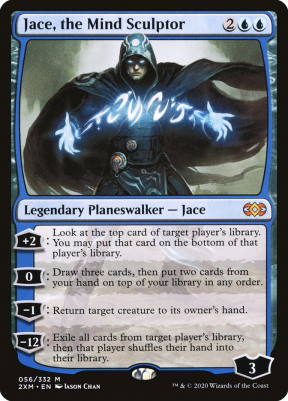
Local game stores often have a group playing Commander at some point during the week. Showing interest will usually land you a spot in the next game. Some players won’t mind lending you a deck of theirs to play with. Playing with others’ decks can be challenging while learning a new format, but it’s beneficial to know what kind of decks are out there.
Precons and Budget Decks
Building a Commander deck from scratch is great for players with a collection as piecing together a theme is a lot of fun. However, players who have not built up a collection need to look for other ways to build a deck. If you haven’t built a deck before or are new to the format, it can be difficult to know where to start.
Commander precons are some of the best MTG products available, and they’re ideal for new players. Precons offer a supported theme with multiple commander options at an affordable price of $35 – $50. Commander Precon decks vary in power, but just a few upgrades can make a big difference. For new players, picking a theme that excites you is more important than picking a stronger deck.
RELATED: Best MTG Commander Precons
What Makes Commander Fun?
I love Commander; it’s why I am writing this article. Here are some reasons why you might enjoy it too.
Unique Games
Because Commander has one of the largest pools of cards to choose from, you can use your creativity to build just about any combination you can think of. Commander is also a slower format that often supports high mana cost cards.
The limitation of singleton creates more diversity within your deck, especially compared to a traditional 60-card deck that can run playsets of four. A Commander deck’s diversity creates more unique scenarios which make games more lively, since it may have created a
Not only does each player bring more cards and strategies than in traditional 60-card formats, but there are also more players in a typical game of Commander.
Multiplayer
Playing with more people creates not only new gameplay, but new connections. Many players play Commander for the atmosphere that multiplayer games bring. Commander is a casual format that attracts those who need a break from competitive formats. In general, players want to win while appreciating their opponents’ unique decks.
As an example, one player might get a fast start and threaten to end the game quickly. If one player cannot handle it alone, they can make deals with other players to slow down the threat. Politics can help a game ebb and flow, and can lead to very satisfying moments. It’s also one of the more fun aspects of the game and entire decks are geared around making deals and scheming with the other players at the table.
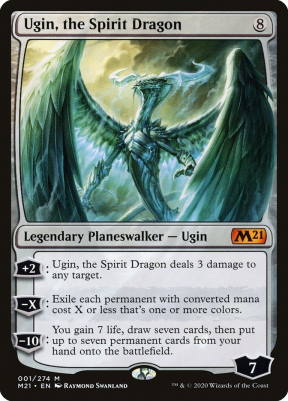
Longevity
The longevity of Commander allows a deck to be viable for decades. The power level of the format has crept up with the introduction of Commander-specific products, deck lists, and guides that inform the community of the possibilities. Decks that were strong 12 years ago can still be played but might have a harder time keeping up with today’s optimized decks.
Still, older decks have a spot in today’s game since playing a 100-card deck feels different each time. It’s reassuring to know that the money being put into building a commander deck can last for a long time.
What Makes Commander Not Fun?
Commander is not all sunshine and rainbows as there are elements of the game that can be frustrating. Luckily, these can all have solutions. Addressing some of the deterring parts of the game will create more discussion and awareness. With each section, there will be suggestions to help if these elements are negatively impacting your game.
Slow Play
Many players gravitate towards Commander for its diversity in card selection and play patterns. The drawback to this is that there are so many cards in Magic that some players can feel overwhelmed, even if they have played the game for many years. This leads to slow decisions which can make turns last over 5 minutes.
Some decks are also geared toward longer turns. If a deck can create tons of extra mana and draw lots of cards, it can lead to long turns with complicated plays. Even if the player is going fast, there can be so many possibilities or such long, powerful turns that everyone else is left watching and not playing.
Suggestions: Understanding your own deck before entering a game is the easiest way to increase play speed. While playing, if a player is spending their time and attention to understanding their own cards they are limited to what they can process of the
As a result, players that like to switch decks often or take long breaks from Commander often struggle with this. Players waiting for their turn should be thinking about what they are going to do on their turn.
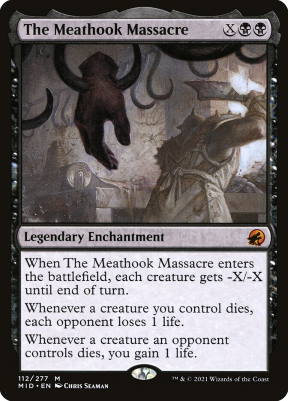
Players should start their turn with the knowledge of the
Breaking Deals
Playing a multiplayer game allows for politics and making deals, such as, “I’ll destroy that enchantment that’s hurting you if you don’t attack me next turn.” This is a common part of the game and would not normally be a problem unless that player breaks their promise by attacking when they agreed they wouldn’t.
It can leave a bad taste in your mouth to get backstabbed by your friends, especially if that player ends up winning the game. Players who break their promises are hurt the most in the long run since nobody will trust them in future games. Breaking too many deals can cause people not want to play with you.
Solution: Pretty simple, do not break deals or stop making deals with those you can’t trust.
Unequal Power Levels
This refers to the difference in strength between each player’s deck. Many players are unsure how to evaluate their deck’s power level, or determine their opponents’. If decks are too far apart in power, players will feel like they did not have a chance to play the game.
Some decks can win around turn 3 consistently if nobody disrupts them. A casual deck that wants to play a silly theme likely won’t be able to stop them. Neither of these decks is wrong; they’re just meant for different tables. All players want to play Magic and having unequal power levels prevents them from doing so.
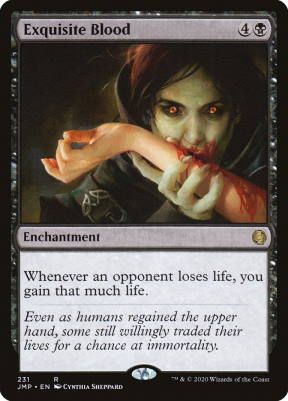
Solution: This problem is more difficult to work on since there are many items to address when understanding power level. First, having clear communication before even starting the game is important. Even just asking, “What power level do we want to play at?” can lead to a better experience for everyone.
Second, you need to understand the power level of your own deck. It’s hard to have clear expectations about a game if you can’t represent your deck properly. Below is a guide that can help you figure out just how strong your deck is.
How to Determine the Power Level of Your Deck
Most players do not know what power level means in Commander, and the ones that do are usually divided. Keeping the table within a similar power level is important, but often times players misevaluate their deck. With so many variations of deck strategies, saying that someone has a mono blue commander does not explain how strong the deck is.
Currently most people use a scale from 1-10 to discuss power level. However, confusion between players doesn’t happen when a deck is at power level 10. In addition, players almost never even rate their decks between 1 and 3. The real problem comes from what makes a deck a 6 and not a 9. Reducing the options in half can allow for more consistent evaluations and therefore better games.
From 10 Power Levels to 5
| Rank out of 5 | 1 | 2 | 3 | 4 | 5 |
| Rank out of 10 | 1-4 | 5 | 6-7 | 8-9 | 10 |
| Attributes | Precon | Not Tuned Casual | High Synergy | Combo Focused | cEDH |
| Distribution | %5 | %15 | %60 | %15 | %5 |
| Speed (turns to win) | 12+ | 10+ | 8-10 | 6-8 | 1-5 |
| Consistency | None | None | Little | Lots | Repeat |
| Interaction | Little | Little | Good | Lots | Lots |
Rank 1: Straight out of the box Precon deck. The deck has a theme, and will win only through that theme or from combat damage. Takes a while to ramp up and become a threat with a few cards that need to be feared.
Rank 2: Slightly altered Precons or decks that are built for a specific strategy, but contain a lot of random cards. Suffers from a lack of consistent play patterns even if the overall power of cards is stronger than the precon. Can be converted to Rank 3 if the random cards were swapped out for more synergy pieces.
Rank 3: The majority of EDH decks are in this category and are dedicated to their strategy. The theme is based around strong cards and high synergy to support them. Few tutors are in the deck with interactive plays to be focused on the battlefield.
Rank 4: High functioning themed decks with tutors to find combos. Interaction is a mix between counters, spot removal, and protecting its own combo. Often missing key mana acceleration and fine tuning big mana spells that the power level 5 decks have.
Rank 5: cEDH power level decks that are fast combo decks or designed to compete with them. Often contains elements of the cEDH meta of fast combo, mid range, or stax. Will execute their game plan before turn 5 if not interacted with.
What is cEDH?
cEDH is the competitive version of Commander (hence, competitive Elder Dragon Highlander). The rules, ban list, and deck requirements stay the same. What changes is the intent of the deck construction and piloting the deck. Before diving in further I have found that new EDH players that start off with cEDH have a difficult time enjoying traditional EDH. For that reason I’d recommend starting off with EDH if you’re new.
Related: What Is CEDH: Your Questions Answered
Archetypes
cEDH decks are highly efficient and consistent. They generally fit into one of three categories: fast combo, midrange or control, and stax. Fast combo decks are trying to execute one or two combos while their other cards are there to ramp, tutor, protect, and draw towards their combo. Fast combos are the glass cannons of the meta.
Midrange decks are trying to gain resources while they craft their combo. They also require the necessary interaction to prevent fast combo decks from stealing the game. Control decks try to handle combos through lots of interaction, but they cannot win as quickly.
Stax decks are trying to punish other cEDH decks that are too greedy. Stax cards cripple some cEDH decks by preventing their line of play for their win condition.
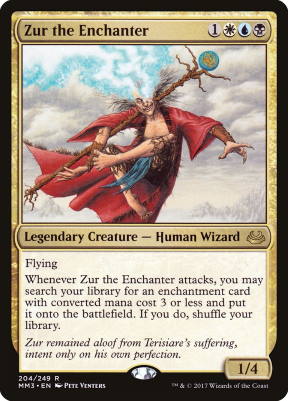
No matter which archetype a deck falls into, it will be executing its game plan quickly with lots of mana acceleration and tutors.
Gameplay Decisions
Decisions in cEDH also differ from regular Commander. All players at the table should be aiming to win the game, no matter what. In regular EDH, players often discuss about what should happen based on feeling and fairness. cEDH is much more cutthroat. If a player has a chance to win by killing the player that fell behind, then they should take it.
Magic that is traditionally 1v1 brings no fault to a player who is using their advantage to win the game. The multiplayer aspect of EDH brings sympathy to others who are struggling, which is good for EDH. After all, everyone is there to enjoy a casual game of Magic. In cEDH, everyone should be trying to win and know that strategic plays should not bring to spite to that player.
Players should also avoid Kingmaking. Kingmaking is when a player cannot win, but interacts with the
How Expensive Is Commander?
Commander as a format is more flexible in price than other formats. Part of the reason for this is that it’s an eternal format that does not have a competitive metagame. Since EDH is casual, there is no need to spend a lot of money on a deck.
Related: The Best Budget MTG Commander Decks
Still, there are some die-hard commander players that will have a “blinged out” version of their favorite deck that could be $10,000 (looking at your triple-sleeved deck with the Masterpiece Sol Ring).
Commander also doesn’t rotate like Standard does, so players can play with their decks for as long as they want.
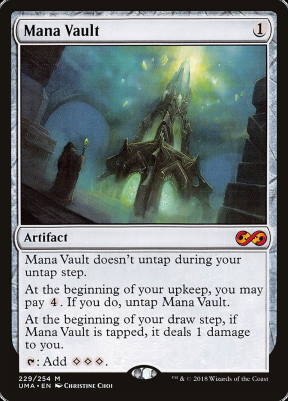
Building a standard deck can be cheaper than a Commander deck. However, the lifespan of Standard is quite short. Commander decks do fluctuate in price, but core Commander cards hold their price more than the new Standard legal sets.
Below are some common questions when talking about financing EDH.
Common Questions
How much should I spend on my first commander deck?
A: I highly recommend picking out a precon commander deck which is around $30 – $50 and then adding a few singles to support the deck. You shouldn’t need to spend more than $100 to have a solid deck for most play groups.
I don’t want to play with 5 color commanders since the lands are so expensive. Are dual lands worth it?
5 color decks do ask for more quality in the lands for the sake of consistency. Players without a collection should avoid 5 color decks if they have a tight budget.
However, players do not need duals and all the fetches to be consistent. Shock lands are the closest in power level to dual lands in the game due to the higher life total in Commander.
My play group is starting to be more competitive, and it’s getting really expensive. I want to keep playing with them while still having a chance to win. What should I do?
A: Look into budget options of strong cards that can help elevate your current deck’s power or look for strong budget decks that peak your interest. If those do not seem appealing, then talk to your playgroup about proxies.
Should Proxies Be Allowed
MTG players often debate what proxies should be allowed in Commander, if any. There is a common feeling that playing with the real printed card is more rewarding as there was effort put into acquiring the cards. However, players need to understand that Magic can get expensive and not everyone has the same budget.
Proxies have a poor reputation because if the card being proxied is really powerful, that player gains the advantage without spending the money. Keep in mind that being at the same power level is one of the most important pieces to a successful game. One player with high-powered proxies will offset the balance of the group.
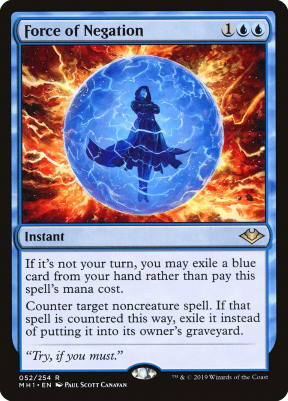
Players should take consideration when proxying cards. Proxied cards for the purpose of completing a deck’s theme and not to out power the other decks is ideal. Players should communicate with the table about proxies before bringing them.
Here are some general guidelines that have been successful in other playgroups.
RELATED: MTG Proxies: An Ultimate Guide
Proxy General Principles
- First, when a player plays with a new group they should ask if proxies are allowed. If some players are against it, then proxies should not be used.
- Proxying a card that is owned, but in a different deck or in a folder is more acceptable than not owning the card at all. Commander players that own lots of decks understand the struggle to own multiples.
- Playgroups will often set a minimum price of a card that is acceptable to be proxied, often around $100. The amount of proxied cards in a deck is often limited to 10.
- Proxies that closely resemblance the actual card are best since players want the
board state to be clear. Flipping a card over and scribbling parts of a card is not considerate to your opponents. - Proxying for cEDH is more acceptable as the price of a lot of core cards are so high. (Dual Lands, Mox Diamond, Mana Crypt, Timetwister, Lion’s Eye Diamond, etc.)
- Proxying to make a theme run is more acceptable. Proxying a Mana Crypt does not add to the deck’s uniqueness, but Chains of Mephistophele does.
- Last but not least, the power level of the cards being proxied needs to be appropriate for the group.
What Are Some Popular Commanders for EDH
Atraxa, Praetors’ Voice
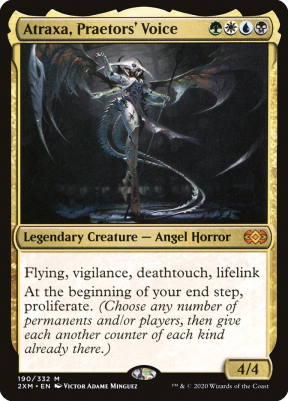
She’s one of the most popular commanders of all time by being a conduit for many strategies. In addition, Atraxa’s proliferate ability supports new archetypes with counters.
Potential themes include: Planeswalkers, Infect, and Energy. Atraxa, Praetors’ Voice builds advantages slowly, but consistently. Planeswalkers are engines that can get out of control quickly. In addition to gaining value, planeswalkers are often the win conditions of the deck.
Some of her key cards are Astral Cornucopia, Deepglow Skate, Doubling Season, and Tamiyo, Field Researcher.
RELATED: Planeswalkers: An Ultimate Guide
Kenrith, the Returned King
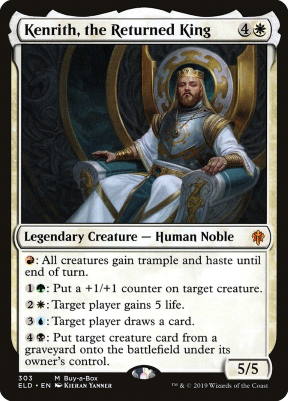
He’s a jack of all trades 5 color commander that be anything you want it to be. His abilities are versatile and functional at any point in the game. In addition to their strength, each ability is at instant speed.
This powerful and flexible commander may not stick around for long, as it’s similar to the recently banned Golos, Tireless Pilgrim.
Edgar Markov
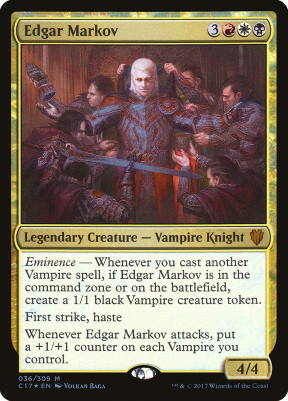
Edgar Markov and his popularity grew by being one of the best aggressive tribal decks. Playing with a tribal deck makes the build pretty straightforward and easy to pilot.
With a few early vampires followed up by an anthem, the damage output becomes outrageous. Knowing when to push for damage or holding up protection from a
Construction consists of a handful of support cards followed by the player’s favorite vampires: Skullclamp, Vanquisher’s Banner, and Captivating Vampire.
Meren of Clan Nel Toth
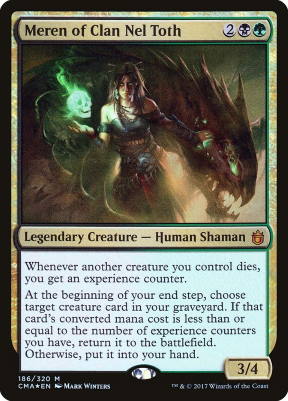
Meren of clan Nel Toth was from the Commander 2015 precon and is one of the best decks for new players. You can build a deck for her in many directions: just make sure your creatures are dying.
Meren’s ability pairs with the following themes: Aristocrats, Sacrifice, and Pod. Note that the experience counters do not go away after Meren leaves the battlefield, so building those counters early is vital.
Unless there is serious graveyard hate, this deck will always have plays to make and creatures on the battlefield. Key cards for consistency are Viscera Seer, Ashnod’s Altar, Sakura-Tribe Elder, and Skullclamp.
How Should A Commander Deck Be Built?
As mentioned previously, Commander is a creative format, so feel free to build as you like. Below is a general guide for commander decks that are at a power level 3 or lower. Higher-powered decks begin to stray away from these proportions.
Understanding the components of deck construction will aid in understanding why a deck is not functioning properly. For examples of each type, we will reference Meren of Clan Nel Toth decks.
Lands: 36 – 38
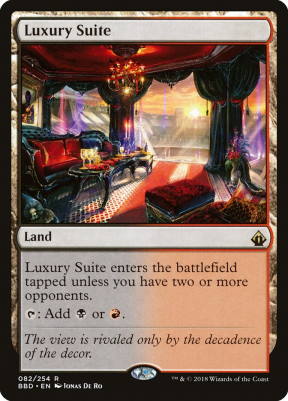
The most impactful ratio on this list is lands. If a deck falls below 36 lands, there will be games in which you get mana screwed. And no, having lots of ramp cards doesn’t make up for this.
Related: The Best Lands In MTG – A Complete Guide
Decks should cap around 38 lands unless they have a theme based around land. Having lots of fetch lands also skew the number lower as they take away lands to be useful. A deck with 36 lands with 8 of them being fetches is getting into the danger zone of missing land drops.
Creatures: 20 – 35
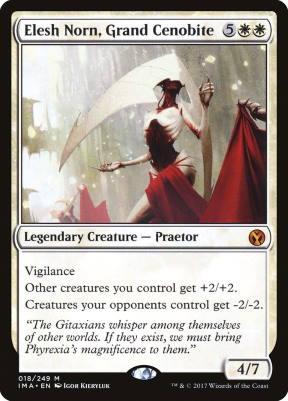
Having a healthy amount of creatures is essential as an open
Utility: 5 – 15
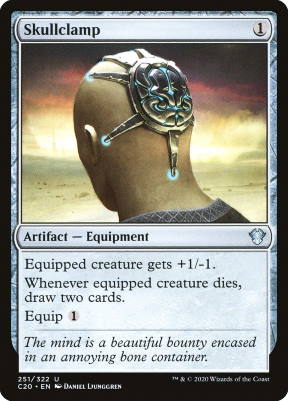
Utility cards that support the theme of the deck. Viscera Seer, Skullclamp, and Ashnod’s Altar are utility cards that help put creatures into the graveyard for Meren.
Ramp: 6 – 10
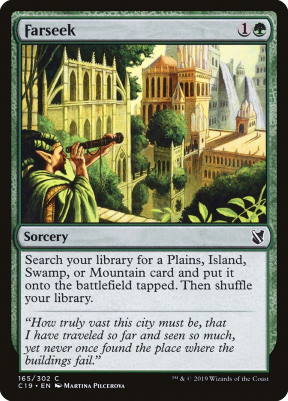
One of the key indicators for who is ahead is the mana potential on
Ramp allows bigger spells to be played sooner, or they allow multiple spells to be played in a single turn. Ashnod’s Altar also fits into this category, but most mana rocks are a consistent source of mana.
Sakura-Tribe Elder is a consistent and early way to begin ramping. The most played card in commander, Sol Ring, falls into the ramp category as well.
Draw/Tutors: 6 – 15
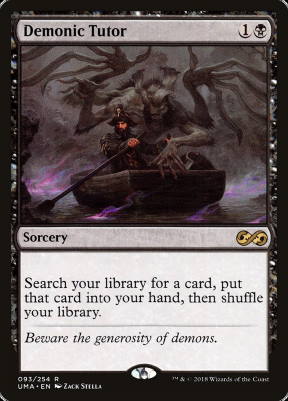
Drawing allows for more choices and resources to navigate the game with. Without enough card draw, decks will run out of steam and end up losing the game.
Having repeatable card draw effects is a great way to keep the cards flowing, and having it on a commander is powerful. Skullclamp uses Meren’s recursion ability to fuel the hand and graveyard by killing creatures as needed.
Removal: 4 – 8
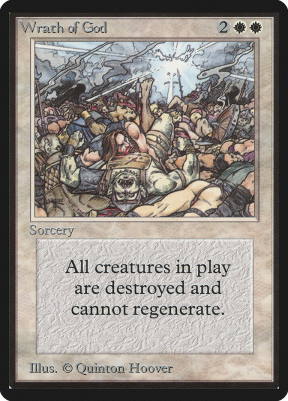
The category of removal can be further split between spot or mass removal. Since many decks rely on their creatures, having a
Demon’s Disciple is a removal spell that is powerful against commander centric decks that do not run a lot of creatures.
Back To The Command Zone
Commander can be intimidating and intriguing as the possibilities are endless. Many players who have experienced real back and forth Commander games can attest to how exciting this format is.
These great games can be achieved by understanding deck construction, power level, and having open conversations. I hope this walkthrough of Commander has helped give insight to MTG players of all levels.
